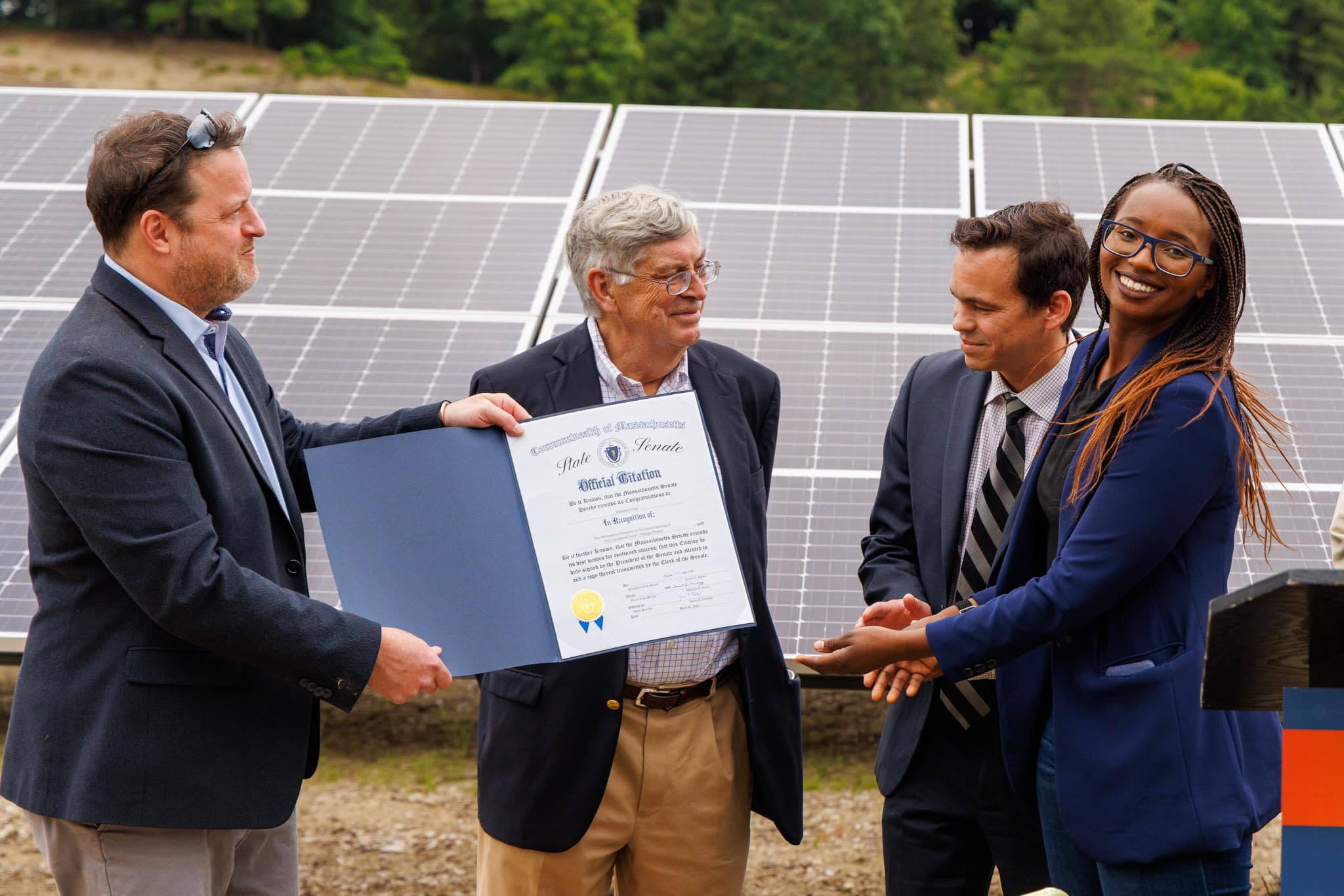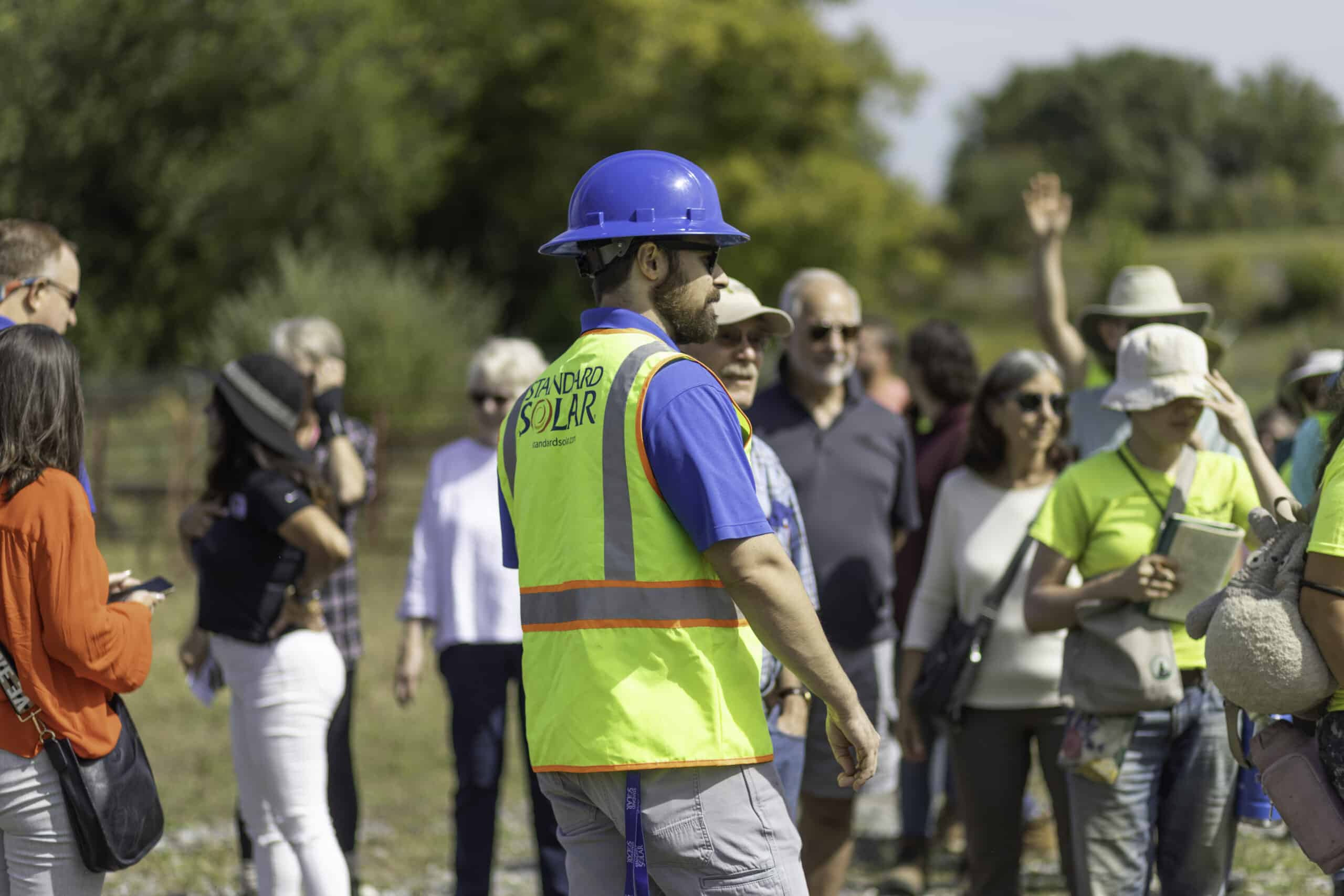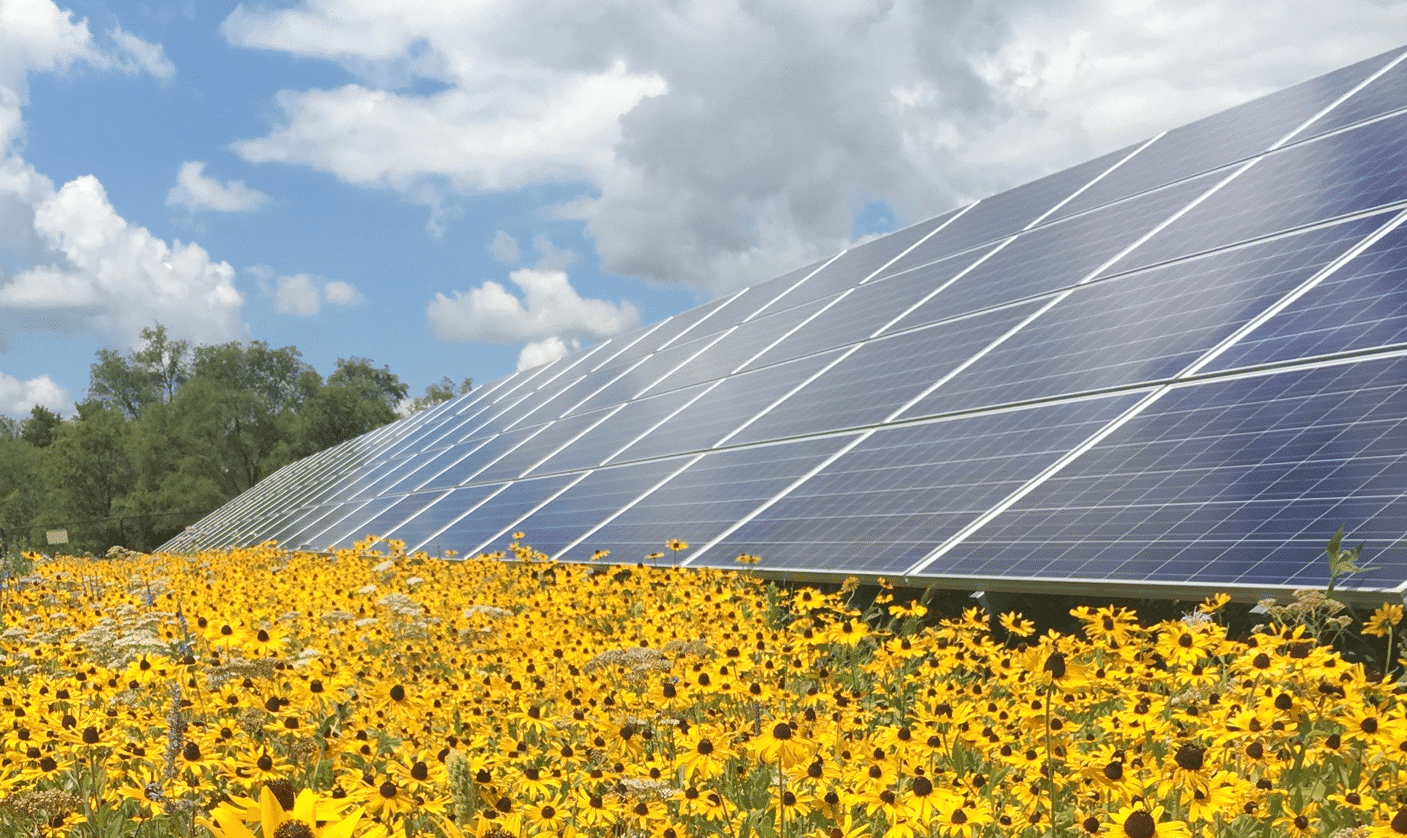AC IL Hillsboro Solar Project
Montgomery County, Illinois
The Hillsboro Solar Project in Montgomery County, Illinois, will provide the SERC Midwest / Eastern Power Grid with around 6.9 megawatts (MWdc) of renewable energy annually. Supporting Illinois’ goal of achieving 40% renewable energy by 2030, this project will strengthen the state’s electricity mix while reducing carbon emissions.
Spanning 33 acres, the project will feature over 11,500 solar modules on a single-axis tracker system. It will produce approximately 11,550 megawatt hours (MWh) of renewable electricity each year, displacing up to 9,985 metric tons of CO₂ annually. This will significantly reduce reliance on fossil fuels and contribute to a cleaner environment.
From 1911 to 2003, the property produced leaded-zinc oxide, generating over 40,000 cubic yards of hazardous waste improperly disposed of on site. The U.S. Environmental Protection Agency, Illinois environmental authorities, and a team of engineers and contractors surveyed, demolished old infrastructure, and cleaned the site to ensure it no longer poses a hazard to human health or the environment. Remedial action was completed in 2015, and the EPA reviews its environmental conditions every five years. The Hillsboro Solar Project is the result of the county’s efforts to restore the site and put the land to productive and safe use.
As a Community Solar Garden, the project is designed to expand access to solar energy for Illinois residents who may not have the financial means or space to install solar panels on their own properties. By participating in community solar, residents can benefit from lower electricity costs while supporting the transition to renewable energy.
Construction is set to begin in August 2025, with operations expected to start by April 2026.
Benefits
Economic Impact
Clean Energy Impact
The Hillsboro Solar Project is the second solar power plant to go online in Montgomery County, IL, after the Coffeen Coal Power Station was decommissioned in 2019.
The Hillsboro Solar Project will play a vital role in Illinois’ clean energy transition by generating approximately 11,550 MWh of carbon-free electricity annually. By providing enough power for 1,250 U.S. homes, the project directly contributes to reducing greenhouse gas emissions in a state where electricity accounts for 40% of total emissions. As a pollution-free energy source, solar power supports Illinois’ decarbonization goals while enhancing the resilience and sustainability of the local grid.
Offsets
Location
City of Hillsboro, Montgomery County, Illinois
Project Size
6.9 MWdc
Timeline to operation
Construction will begin in August 2025, with operations expected to commence in April 2026.
The Hillsboro Solar Project will generate approximately 11,550 MWh of renewable electricity annually, enough to power 1,250 U.S. homes.
The project repurposes a 33-acre former zinc smelter site that underwent EPA-approved remediation, transforming contaminated land into a source of clean energy.
Location
Strategically located in Hillsboro, Montgomery County, Illinois, the Hillsboro Solar Project repurposes 33 acres of a former Zinc smelter site to generate 6.9 MWdc of clean energy while enhancing environmental safeguards and promoting local biodiversity. Positioned within the Illinois power grid, the project will bolster regional grid reliability and contribute to the state’s goal of 40% renewable energy by 2030. The site’s design provides a long-term safe enclosure of the areas containing contaminated waste, which was stored underground in the 1980s.

Economic Impact
- Creates local construction jobs and lowers electricity rates for residents
- Generates tax revenue to support essential services and infrastructure
- Promotes economic growth through sustainable land use and clean energy development
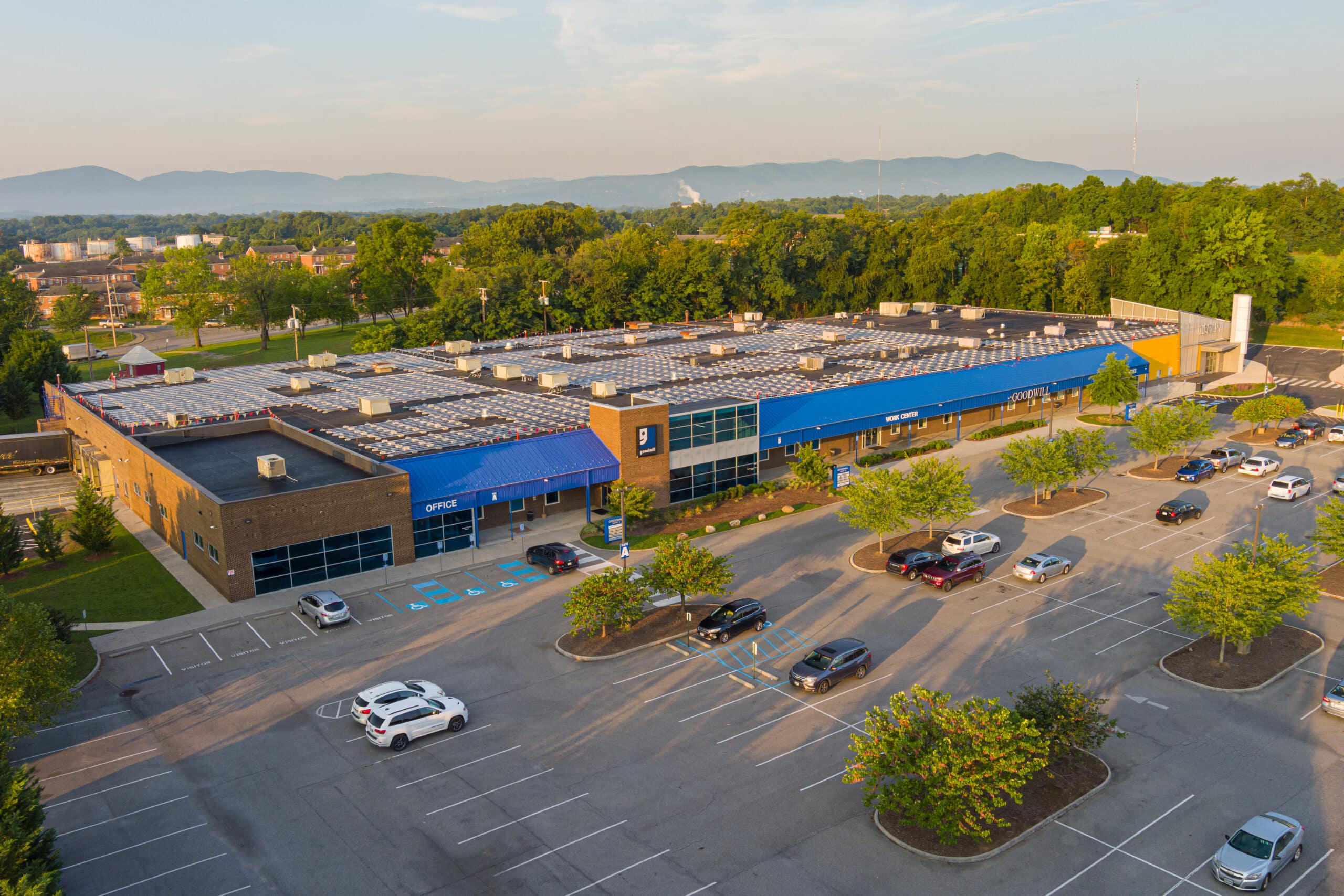
Goodwill Industries, VA, 0.5 MWdc
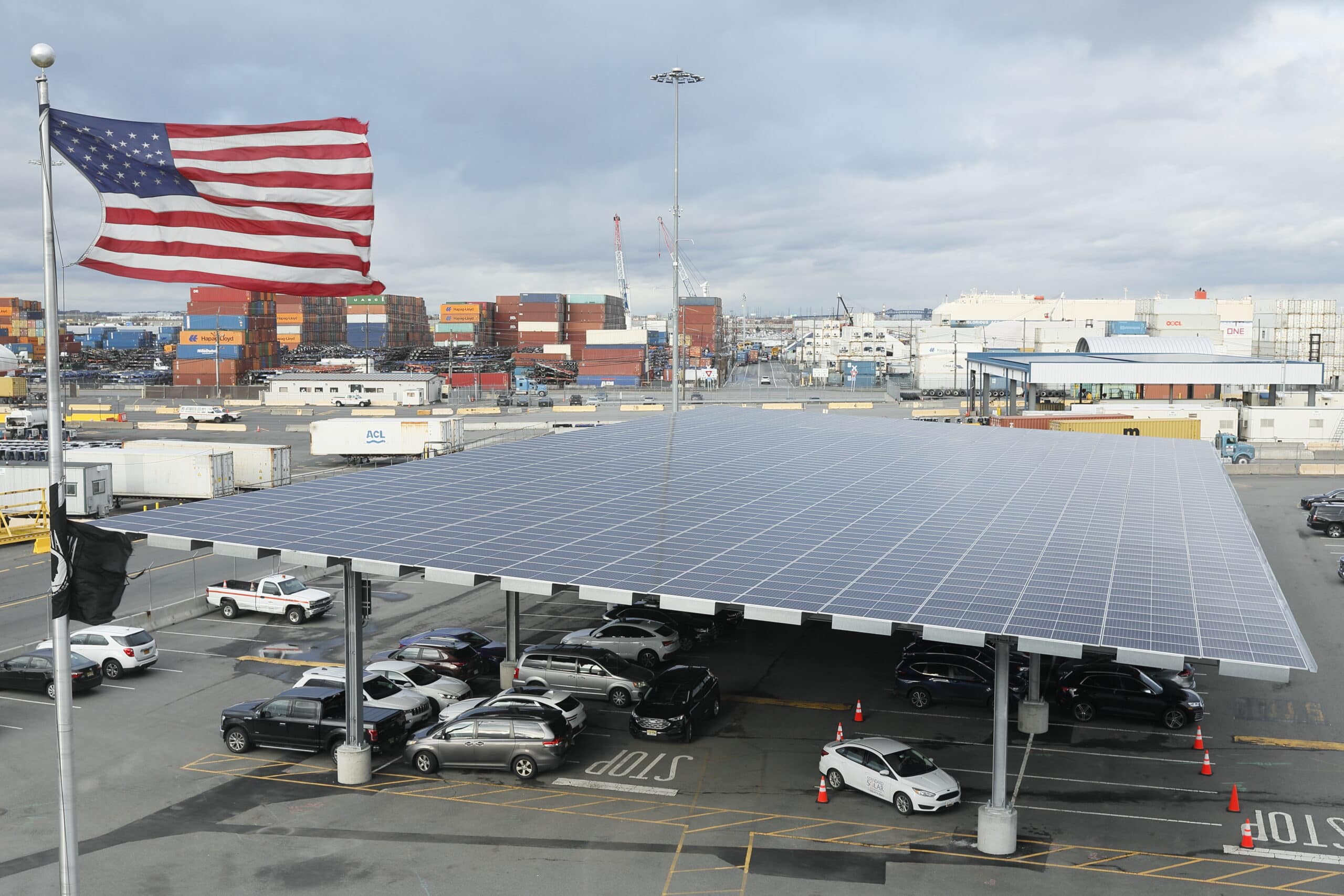
Port Newark Container Terminal, NJ, 3.29 MWdc
Clean Energy Impact
- Powers 1,250 homes annually with 11,550 MWh of carbon-free electricity
- Supports Illinois’ goal of 40% renewable energy and strengthens local grid resilience
- Marks Montgomery County’s second solar plant since the Coffeen Coal Power Station closed in 2019
Environmental Impact
- Eliminates nearly 10,000 metric tons of CO₂ annually, advancing regional decarbonization
- Avoids fossil fuel combustion, helping build a cleaner, more sustainable Illinois grid
- Delivers environmental benefits equivalent to removing over 1 million gallons of gasoline from use
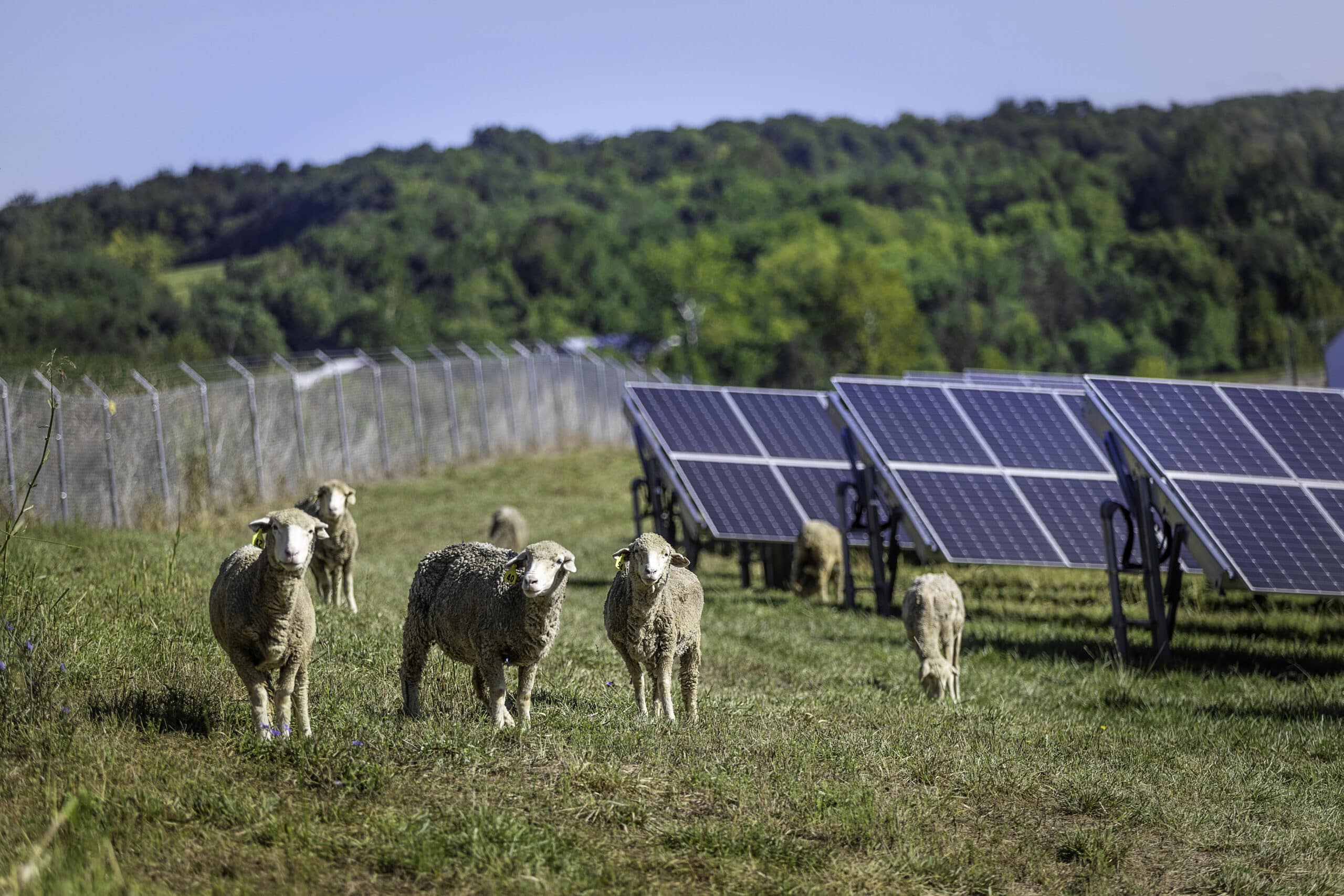
Shepherds Mill, MD, 2.77 MWdc
Project Location
Where is the Hillsboro Solar Project located and is it visible from public roads?
The Hillsboro solar project is in the City of Hillsboro, Montgomery County, Illinois.
The project is not visible from the residential built environment as the project is in an industrial zone. Parts of the array may be visible south from Smith Road, which is adjacent to the Hillsboro Water Treatment Plan and no neighbors in the area have a direct line of sight into the array.
Who owns the land on which the Hillsboro Solar Project is built?
The Hillsboro solar project is built on land owned by the City of Hillsboro, which is rented by Standard Solar to operate the system. This land will be leased for a period of 25 years once the project is fully developed, subject to two optional and voluntary five-year renewal periods.
Safety & Operations
How do solar panels work?
Solar panels work by converting sunlight into electricity through a process called the photovoltaic effect. Each panel is made up of many solar cells, typically composed of silicon, a material that can absorb sunlight. When sunlight hits these cells, it excites electrons, creating an electric current. This current is collected and directed through wires to power homes, businesses, or the electrical grid. Solar panels are often installed in arrays to capture as much sunlight as possible, and they work best in sunny locations. By harnessing the sun’s energy, solar panels provide a clean, renewable source of electricity without producing harmful emissions.
What happens after the useful life of a solar project?
At Standard Solar, we are committed to sustainability throughout the entire lifecycle of our projects. The Hillsboro solar project will produce electricity for 25 years. After this time, when the project reaches the end of its operational life, there are well-established processes to ensure responsible repowering or decommissioning and recycling.
Standard Solar has programs and policies to safely remove equipment, restore the land to its original state and recycle materials like glass, metal and silicon from solar panels. These programs allow Standard Solar to minimize waste, prevent any burdens on the community and support the circular economy, ensuring that renewable energy remains a sustainable solution for future generations.
Do solar projects make noise?
Solar projects are designed to operate quietly, making them an ideal option for generating renewable energy without disrupting nearby communities, agriculture or wildlife. The primary components – solar panels – make no noise during operation. Some equipment, like inverters or transformers, may produce a low humming sound when converting solar energy into electricity. The site’s equipment produces up to 79dB when at a 3-ft distance from the site. When standing at the property line, roughly 350 feet away from the equipment, the sound is barely perceptible at 35-40 dB, which is well below the average ambient noise of a suburban neighborhood.
Additionally, this project is in an area where the distance from homes further reduces any potential sound impact.
Will the project produce glare?
Solar projects, including this one, are designed to minimize the potential for glare. Solar panels are specifically engineered to absorb sunlight, not reflect it, as their primary function is to convert sunlight into electricity. Modern panels are coated with anti-reflective materials to further reduce reflection. Additionally, projects undergo detailed studies and modeling during the planning phase to ensure they do not create glare that could affect nearby residents, drivers, aviation and wildlife.
Environment & Wildlife
What is a superfund site?
An EPA Superfund site is a site contaminated with hazardous substances that are managed under the Comprehensive Environmental Response, Compensation and Liability Act (CERCLA). The program is administered by the U.S. Environmental Protection Agency (EPA). This program allows the EPA to clean up hazardous waste sites and restore them to usable land.
More information on CERCLA can be found on the EPA website.
How will the project manage erosion and stormwater during its lifetime?
This project has been designed with comprehensive measures to manage erosion, stormwater and dust control effectively throughout its lifetime, ensuring minimal impact on the surrounding environment and no disturbances to wetlands or waterways. The project complies with all applicable local, state and federal permits and certifications.
Before construction, the site underwent a thorough assessment, and best management practices were implemented, including silt fences, sediment basins and buffer zones, to mitigate runoff during the building phase.
Once operational, the site will be stabilized with vegetation, including tall fescue grasses, conservation shade mixes (grasses) and butterfly and hummingbird garden mix (native flowers). Regular monitoring and maintenance will ensure that erosion, stormwater and dust control remain effective for the duration of the project.
What is the impact on area wildlife?
Standard Solar carefully considers the impact on wildlife and biodiversity in all projects to minimize disruption to local ecosystems. Detailed environmental studies are conducted to identify sensitive habitats and species, and to mitigate potential adverse impacts.
Consultation with the Illinois Department of Natural Resources (IDNR) and the U.S. Fish and Wildlife Service (USFWS)
The Illinois Department of Natural Resources determined that there are no state-listed threatened or endangered species, no record of any Illinois Natural Area Inventory Sites or Natural Preserves or registered Land and Water Reserves near the project location.
The U.S. Fish and Wildlife Service (USFWS) identified Indiana Bat to potentially occur on site. However, the site does not support the bat’s habitat, therefore, no impacts are expected from the on-site activities.
Environmental Remediation: Creating a Wildlife-Friendly Site
The Hillsboro Solar Project comes online at a site that was previously cleaned up from hazardous industrial waste. Now a field, the project incorporates several measures to enhance biodiversity and create a wildlife-friendly environment for diurnal and nocturnal pollinators.
Bat boxes will be installed along the perimeter to support local bat populations. The area will be seeded with native plants and grasses that provide food and shelter for bees, beetles, butterflies and birds, as well as providing stronger nature-based controls to prevent erosion.
Wildlife-friendly fencing and vegetation buffers will be implemented to ensure the safe movement of small animals and birds throughout the site. Additionally, ongoing monitoring will be conducted to minimize environmental impact and ensure compliance with biodiversity and ecosystem protection regulations.
